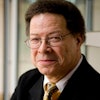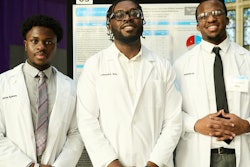Symposium Highlights Need for Diversity in Health Professions
By Ronald Roach
WASHINGTON
Organizers of a health professions symposium on diversity last month placed considerable emphasis on education reform and minority academic achievement research. As a result, nationally recognized scholars and higher education officials urged nearly 300 symposium participants to familiarize themselves with academic achievement research and to get involved in education reform initiatives.
Convening the “Symposium on Diversity in the Health Professions in Honor of Dr. Herbert W. Nickens,” the Institute of Medicine and the American Association of Medical Colleges paid significant attention to the systemic educational issues that undermine the push to draw Blacks, Latinos and American Indians into the health professions.
“We believe that diversity is critical to having a quality health care system in this country,” says Dr. Jordan Cohen, president of the American Association of Medical Colleges (AAMC).
The symposium honored the legacy of the late Nickens, who served as the first vice president and director of AAMC’s division of Community and Minority programs. Nickens, who died in 1999, gained widespread recognition for having led the organization’s “Project 3000 by 2000,” an initiative to increase the numbers of underrepresented minorities in medical schools. Although the initiative did not reach its goal of 3,000 underrepresented minorities as first-year medical students by the year 2000, the effort resulted in significant minority enrollment jumps in the early 1990s. The initiative also helped jumpstart a broad-based diversity in health professions campaign in the mid-1990s.
Many scholars and officials have supported affirmative action and K-12 outreach programs to increase the numbers of underrepresented minorities because it’s widely believed that diversity among health professionals improves the quality of health care.
“Since the post-Civil War period, minority medical training has been discussed and debated as a way to address the health needs of largely underserved areas. Increasing the numbers of minority physicians in practice may help ameliorate racial and ethnic disparities in health through a number of pathways,” according to a symposium paper co-authored by Dr. David Carlisle, Dr. Diana Tisnado and Dr. Raynard Kington.
THE BIG PICTURE
Among those scholars and higher education leaders, urging a broad look at minority achievement and access to education, were Lee Bollinger, president of the University of Michigan; Dr. Michael T. Nettles of the Center for Study of Higher and Postsecondary Education; Dr. Linda Darling-Hammond, education professor at Stanford University; civil rights activist and educator Dr. Robert P. Moses; and Dr. Uri Treisman, University of Texas-Austin mathematics professor.
While the education reform-related research presentations focused on the K-12 academic achievement of underrepresented minorities, Bollinger warned the symposium participants that the use of race-conscious affirmative action in higher education is in jeopardy based on the reverse discrimination lawsuits being litigated in the federal courts.
Under current litigation, the University of Michigan undergraduate school and the University of Michigan law school have been sued by Whites, claiming reverse discrimination (see story, page 12).
“If Bakke were to be overturned by the (U.S.) Supreme Court, (the decision) would apply to every institution of higher education in the nation,” Bollinger says, referring to the landmark decision which outlawed racial quotas in admissions, but allowed race to be considered as one of many factors to achieving diversity.
Bollinger says he sees great danger in the possibility that graduate schools, especially, would become used to accepting greatly reduced numbers of underrepresented minorities in their institutions and feel no obligation to increase minority enrollment. As an example, Bollinger noted that Boalt Hall School of Law at the University of California-Berkeley used to enroll 30 to 40 Black first-year students annually prior to the ban on race-conscious affirmative action in California. The law school now enrolls about four Black students each year.
“The concern I have is that this reduction is being accepted as normal,” Bollinger says.
Darling-Hammond, a highly regarded researcher on K-12 minority student achievement, says it’s important to have professions, such as the health care establishment, getting involved in education reform.
“It’s nice to see the (health professionals) willing to get involved in systemic issues. They see this issue in terms of diversity,” Darling-Hammond says.
© Copyright 2005 by DiverseEducation.com


















